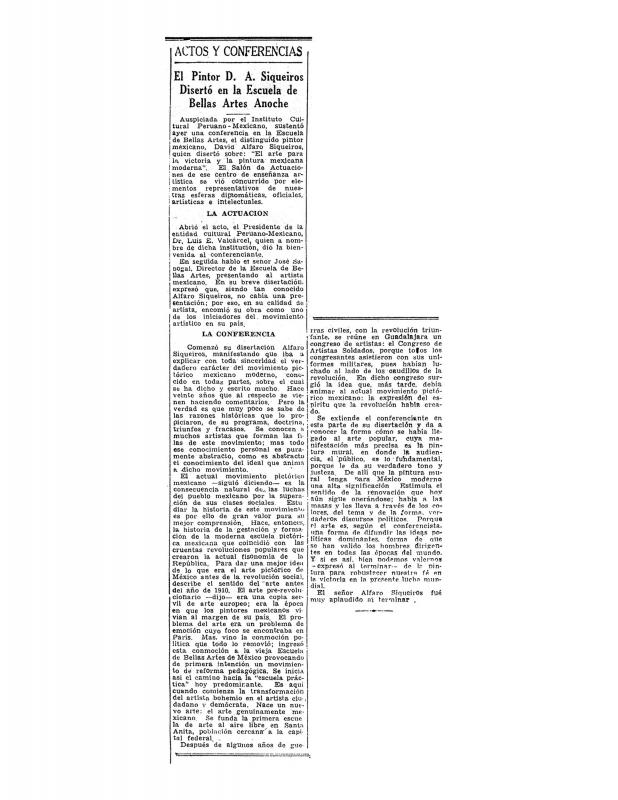In 1943, the influential Mexican painter and muralist David Alfaro Siqueiros (1896–1974) visited Lima as part of a trip to several Latin American capital cities designed to drum up support among local artists and intellectuals for the allied cause during the Second World War. On March 22, he gave a lecture at the ENBA (Escuela Nacional de Bellas Artes), sponsored by its director, the painter José Sabogal (1888–1956), the founder and leader of the Peruvian indigenist school. In his talk, Siqueiros described the so-called “Mexican painting school” which, in his opinion, represented the convergence of a renewal in the visual arts and a political commitment that used the potent expressive power of muralism. The war in Europe was therefore a reason to use the Mexican experience as a way to respond to the common enemy of fascism. It is interesting to note that the local press published very few reviews of Siqueiros’s lecture; but his charismatic presence attracted a great deal of attention in the Lima art world. Some years later, a number of his statements were collected by the critic Luis Fernández Prada (1917–1973), one of the major opponents of indigenism at the ENBA. It should be noted that against the backdrop of the fight against fascism, there was no immediate debate or discussion in response to the lecture by the Mexican muralist.
[See the ICAA digital archive for more documents written by Siqueiros abroad: “Actos y conferencias: El pintor D. A. Siqueiros disertó en la Escuela de Bellas Artes anoche” (anonymous) (doc. no. 1143245); his illuminating manifesto presented in Barcelona in 1921, “3 llamamientos de orientación actual a los pintores y escultores de la nueva generación americana” (doc. no. 801659); and, as a parameter of disappointment, in the 1960s, “A quienes lucharon por mi libertad con mi más profundo reconocimiento” (doc. no. 751235); among many others].


